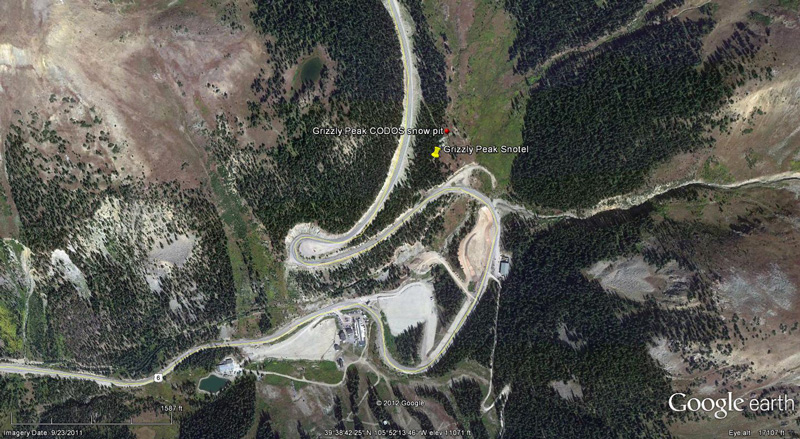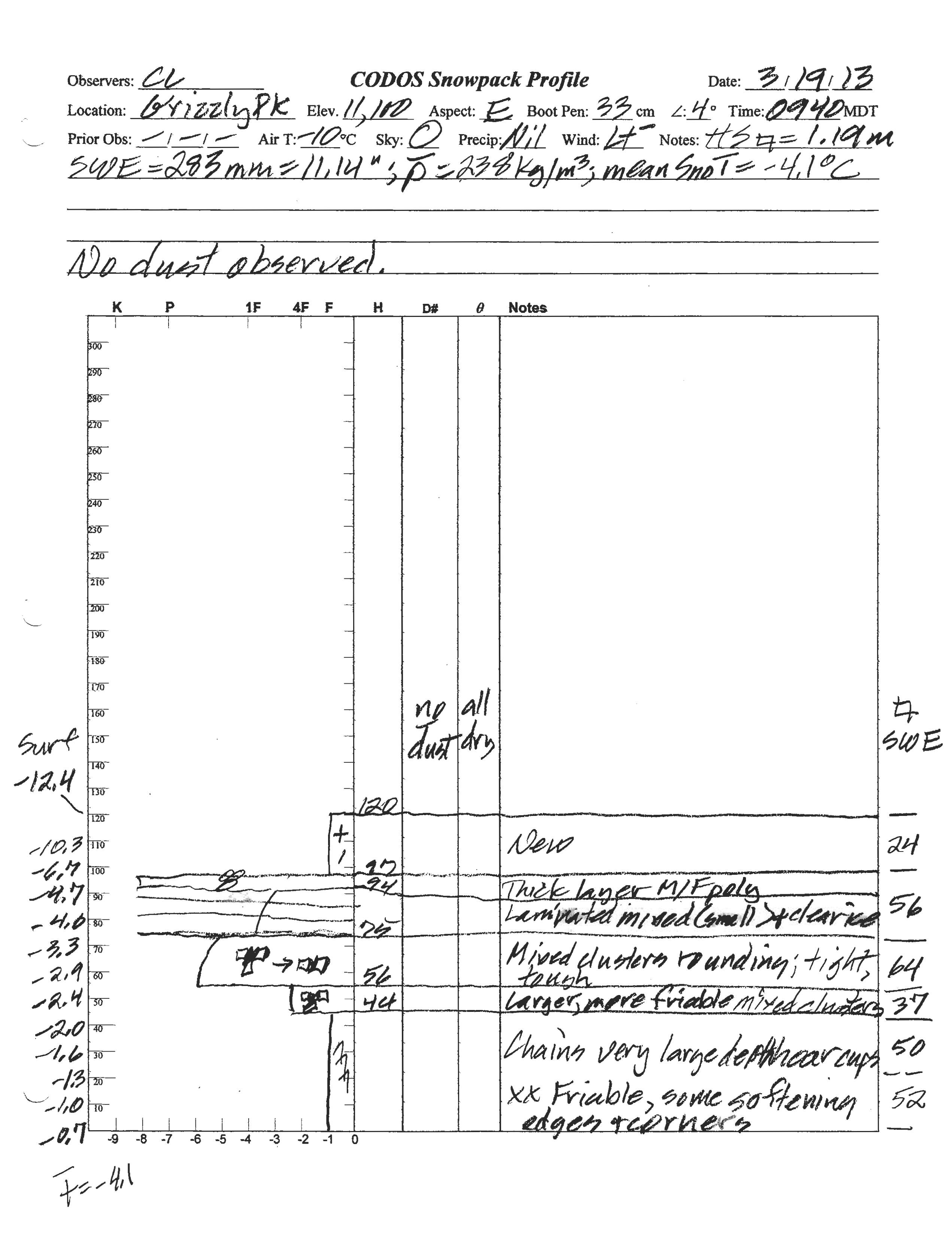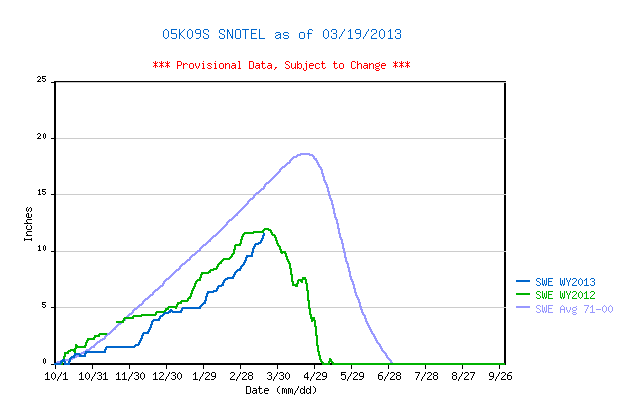 CODOS Update for Grizzly Peak site:
CODOS Update for Grizzly Peak site:
visited March 19, 2013
Summary | Snowpack | Melt Rate | Forecast
Summary
This field session at the Grizzly Peak CODOS site, our first of the WY 2013 season, found very similar conditions to those observed a year earlier, except for the absence of any discernible dust in or on the snowpack. The snowpack still retains cold content and will require additional warming to become isothermal.
SnowPack Discussion
Total snow depth in our March 19, 2013 Grizzly Peak snow profile was 47”, 6” deeper than a year before. Nonetheless, with about an inch less total SWE, mean density of the snowpack was just 238 kg/m3 (23.8% water content), versus 290 kg/m3 a year before. Substantial melt-freeze had occurred in the upper snowpack in preceding days, then refrozen, and the entire snowpack was once again dry and cold. Mean snowpack temperature in this profile was -4.1° C, slightly warmer than a year earlier. No clearly discernible dust-on-snow layers were observed within the snowpack and no D4 dust (March 18 event) was observed in the new snow at the surface, or on the surface.
Grizzly Peak Snotel data for WY 2013 place current SWE within the lowest quartile of values for the period of record and very near the same-date values recorded in WY 2012, albeit still well below the 1971-2010 30-year mean.
 |
 |
|
| 2012 Pit Profile | 2013 Pit Profile | |
| Looking southeast from Loveland Pass toward Grizzly Peak (13,427'), in the center distance. | Arapahoe Basin ski area with several inches of clean, new snow. |
Melt Rate
The well-shaded Grizzly Peak Snotel site continues to accumulate SWE and reports no significant losses of SWE, to-date. Surface snowmelt had recently occurred in the snowpack at our east-facing CODOS snow profile site. This snow profile showed no evidence that melt water had reached the bottom of and exited the snowpack, as runoff, during that episode.
Forecast
Given the absence of observed dust-on-snow, snowmelt processes at the Grizzly Peak CODOS site and Loveland Pass locale could proceed without significant dust-on-snow enhancement of radiative forcing until/unless subsequent dust is deposited later this spring. The National Weather Service anticipates continued W’ly winds shifting to NW leading into the weekend of March 23/24, with additional snowfalls favoring the northern mountains.
As of March 19, 2013 only NRCS’s “maximum” projection of future snowpack accumulation would result in peak SWE at/above the median at the Hoosier Pass Snotel site. NRCS projects only a 3 in 10 chance that complete snowcover ablation (snow all gone, or SAG) will occur near the median date, and higher probabilities that SAG will be earlier than the median date.


